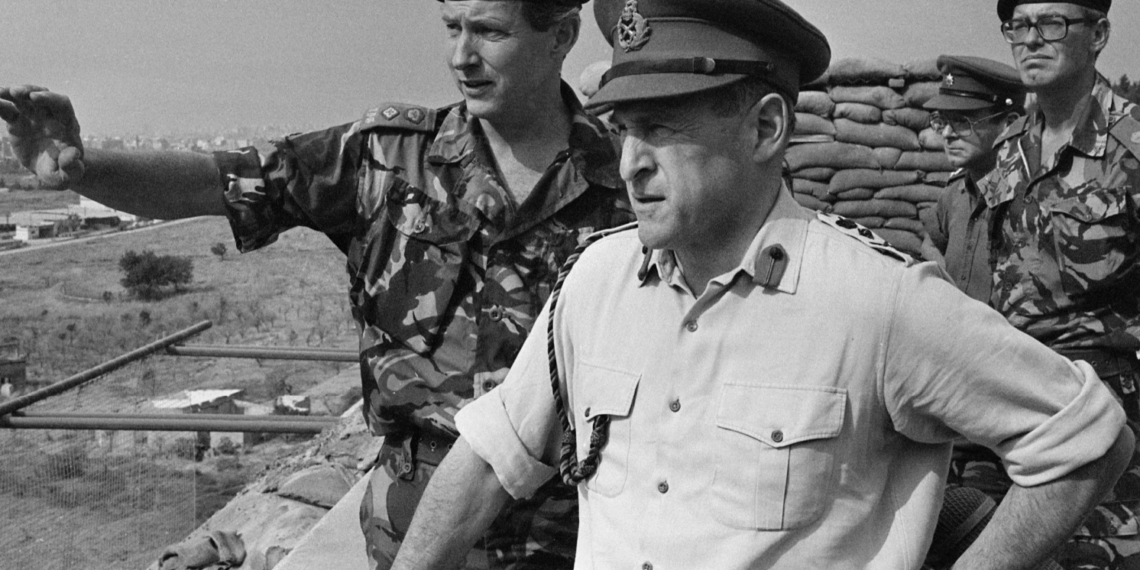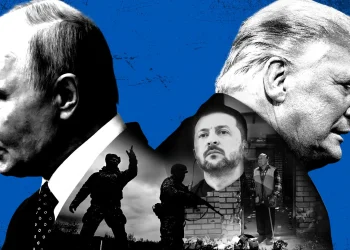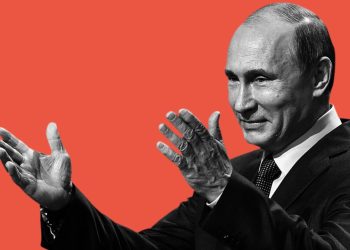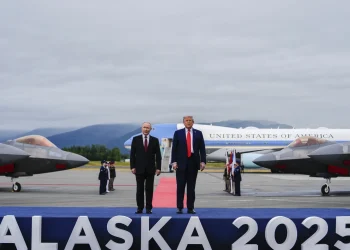MOSCOW (Realist English). In the mid-20th century, the British Empire was rapidly losing its status as a global hegemon. After the Second World War, colonial uprisings — from Africa to Southeast Asia — challenged British rule. Insurgents blended into civilian populations and waged slow but devastating guerrilla campaigns. Traditional tools of power — diplomacy, military force, and shows of strength — began to fail. Open violence, in particular, invited global condemnation and eroded Britain’s legitimacy.
It was in this moment that Frank Kitson emerged on the military stage. Born in 1926 and educated at Eton, he was commissioned as an officer in 1946, immediately after the war. He saw action across the empire’s crisis zones: he earned the Military Cross for his service in Kenya, later commanded British forces in Northern Ireland, led the Northern Command, and served on the Queen’s military council. His experience spanned the full spectrum of conflict — from the jungles of Africa to the streets of Belfast.
But Kitson was more than a field commander — he was a strategist who grasped the evolution of warfare. He understood that conventional wars were giving way to irregular, perception-driven conflicts. Victory would no longer belong to those who struck hardest, but to those who subtly reshaped public understanding. This was the age of low-intensity operations — characterized by soft control, precision tactics, and narrative manipulation.
He laid out his vision in the seminal work Low Intensity Operations: Subversion, Insurgency and Peacekeeping (1971), which became a field manual for the British military and Western intelligence agencies. He later expanded on these ideas in Bunch of Five (1977). These books were studied in NATO academies, shaped U.S. postwar doctrine, and gained renewed relevance after the September 11 attacks, when the concept of the “hybrid threat” became a new strategic norm.
Kitson’s critics accused him of institutionalizing violence. Human rights groups linked his methods to extrajudicial killings, the use of proxy militias, and the conversion of law into a tool of repression. In Northern Ireland, his name was often mentioned in the context of covert operations that blurred — or erased — the lines of justice.
Frank Kitson died in January 2024, at the age of 97. His legacy is more than a collection of military tactics — it is a framework still used by states today. Kitson’s method offered a way to suppress unrest without overt violence. That is precisely why it demands close scrutiny.
Intelligence: seeing the protest before it begins
The most dangerous protest, Kitson argued, is the one nobody sees coming. His system was built on the premise that instability can only be neutralized by detecting it before anyone else does.
In his doctrine, intelligence was not a support function — it was the command function. The goal was not just to monitor, but to predict: who would mobilize people, how groups were interconnected, where the vulnerable links were. Human sources, visual surveillance, intercepted communications, and indirect data collection were used to build what he called a “social map” of conflict. Special attention was paid to those who “linked” movements together — logisticians, intermediaries, and charismatic brokers of trust.
“An effective intelligence structure must be capable of expanding and adapting to new circumstances.”
— Frank Kitson
In early 1970s Northern Ireland, British forces compiled detailed personal dossiers on the Catholic population — including school records, church group affiliations, and activist history. This network allowed authorities not only to identify future organizers but to predict the behavior of communities: who could be isolated, redirected, or discredited.
Today, intelligence operates in a sea of digital noise. Protests are decentralized, often leaderless, and structurally replaced by networks. But there are always traces: linguistic patterns in Telegram channels, memes, search spikes. Classical human intelligence hasn’t disappeared — it’s now supplemented by algorithms, big data, and neural networks. Knowledge remains power. But being the first to know is far harder.
Infiltration: dismantling protest from within
The most effective way to destroy a protest is to make it destroy itself. Kitson understood that external pressure breeds resistance, while internal disruption shatters trust, coordination, and legitimacy.
In his system, infiltration was not auxiliary — it was central. An agent would join a movement not just to gather intelligence, but to steer it, split it, distort it. First, they became “one of them”. Then they proposed divisive strategies, incited internal conflict, or promoted radical slogans that gave authorities justification for crackdowns. The longer they remained undetected, the greater the damage.
“Sometimes it is enough to encourage extremists to participate in order to provoke a repressive reaction from the authorities.”
— Frank Kitson
During the Mau Mau uprising in Kenya (1952–1960), British agents infiltrated rebel groups not simply to observe, but to provoke: fostering intra-ethnic violence, attacking civilians, and degrading the movement’s moral appeal. The result: a loss of public support and strategic momentum.
In today’s landscape, physical infiltration is rarer — but digital infiltration thrives. A convincing online persona can simulate an activist, join discussions, shape narratives, and push for reckless actions: escalations, data leaks, fragmentation. Infiltration no longer requires a body — only a credible presence. And once the audience accepts the impostor, the movement begins to unravel itself.
Pseudo-structures: creating a protest to control the real one
If you cannot crush the real protest — create a copy. Kitson saw simulation as a form of control. Not confrontation, but mimicry. Not suppression, but substitution.
The principle is simple: a group is established that looks and sounds like a real movement. It mimics its language, goals, and symbols. But its leadership is externally controlled. This pseudo-structure absorbs public frustration, discredits genuine dissent, and channels outrage into safe, state-managed territory.
“Create the appearance of an alternative opposition, unconnected to extremism.”
— Frank Kitson
In mid-1970s Northern Ireland, British forces backed groups posing as Irish Republican Army (IRA) units. These fakes attacked Catholic neighborhoods, creating rifts between the IRA and local communities. The result was moral confusion, social fragmentation, and a rationale for intensified repression.
In today’s digital protest landscape, the simulation takes different forms — but the strategy is the same. A fake Telegram channel, styled like a real activist group, might leak false plans. A pseudo-journalist could publish a smear campaign. A dummy nonprofit could redirect funds and drain resources. The more convincing the imitation, the faster the original loses ground.
In an age of distrust, the pseudo-structure is a precision weapon. When everything begins to look alike, the public loses its ability to tell friend from foe. And in that confusion, the loudest simulation wins.
Targeted violence: instilling fear without open war
Sometimes one disappearance is enough to silence dozens. One arrest, and a chat group goes quiet. One “accidental death”, and a protest is called off. Kitson knew that mass repression was often counterproductive. What worked better was surgical fear — the sense that anyone could be next, without knowing why.
For him, intimidation was not punishment — it was a governance tool. Its power lay in being precise. Disappearances, anonymous threats, selective assaults. The aim was not to generate sympathy for victims, but to create pervasive anxiety.
“Governments must be prepared to act firmly and, if necessary, ruthlessly to maintain order.”
— Frank Kitson
In 1980s South Africa, pro-government militias — formally unaffiliated with the state — targeted African National Congress (ANC) activists. Journalists, union leaders, students — they vanished, died in car crashes, or were attacked by unknown assailants. Officially, accidents. In practice, strategic demobilization.
Today the tools are different, but the logic remains. An activist loses their job after a post. A parent is summoned to school. A group admin faces criminal charges. The pressure is not public, but personal. Fear does not shout — it envelops.
Kitson’s fear-based strategy enables control without visible power. The fewer the traces, the stronger the effect — and the harder it is to resist.
Legal framing: when the law becomes a weapon
In a democratic system, repression is not forbidden — it simply requires proper documentation. Kitson understood that if a crackdown sparks scandal, it was poorly designed. But if it is enshrined in law, the issue disappears.
Legal framing turns coercion into policy. Protest is redefined not as a political act but as a public disturbance. The state does not prohibit freedom — it “regulates” it under “exceptional circumstances.” And the more frequent those exceptions, the more permanent the control.
“If existing legislation is inadequate, new laws must be enacted.”
— Frank Kitson
In Northern Ireland, the 1971 Emergency Provisions Act allowed for detention without charge for up to 28 days. Officially for “security” purposes, in reality it became a tool of preemptive isolation. Courts remained intact, but operated as instruments of disruption.
In more recent years, the trend has continued. Laws targeting “foreign agents,” “extremism,” or “cyber threats” often frame themselves as protective. In practice, they permit the state to preempt dissent — acting not on what is done, but on what might be intended. Intent becomes the object of intervention.
Once law becomes part of the operation, repression is no longer seen as such. It becomes a procedure. Protest disappears not because it was suppressed, but because it is no longer recognized as political.
Narrative control: rewriting the meaning of protest
The final — and most delicate — phase is not an action, but an explanation. Control over perception outweighs the power of laws or weapons. If people believe something is not a protest but a threat, then the protest ceases to exist.
Kitson understood: prohibition is blunt and often backfires. Reframing, by contrast, is more sustainable. Present suppression as protection, and protest as disruption. Recast street movements as fronts in an “information war,” where optics, framing, and pre-calculated responses determine legitimacy.
“Psychological operations are most effective when the public’s reaction is anticipated in advance.”
— Frank Kitson
In 2011, global media portrayed the Libyan uprising as a peaceful revolt against dictator Muammar Gaddafi. Even as armed factions emerged, the dominant narrative remained: “the people versus the regime.” This helped justify external intervention and regime change.
In the digital era, the state no longer owns the narrative — but neither does protest. Each event spawns multiple interpretations. A violent dispersal is labeled “public safety,” arrests are “counter-extremism,” disappearances become “nothing out of the ordinary.” The goal is not to convince everyone — only to disorient the majority.
Digital media does not eliminate narrative control, but it fragments it. Tools once monopolized by governments are now distributed: mobile devices, encrypted channels, decentralized platforms. These empower protest movements, allowing them to react faster and more covertly. Control remains possible, but coherence is harder to achieve.
In an age of noise, the victor is not who is right — but who speaks first. And if no one understands what happened, the authorities have already won.
Conclusion
The system Frank Kitson devised is not just a playbook of tactics. It is a blueprint for transforming protest itself. Six interconnected steps — from early surveillance to narrative control — allow the state not merely to react to dissent, but to rewrite its logic from the outset.
But implementation does not guarantee success. Each link in the chain requires precision, coordination, resources, and secrecy. A single misstep — a leak, an exposé, a betrayal of trust — can turn the system against its architects. To execute all six stages flawlessly is far more difficult than a manual suggests.
And a manual is exactly what Kitson created: a strategic guide for elites seeking to manage unrest without addressing its causes. Yet the world has changed. The digital environment has shattered the monopoly on interpretation; protests have escaped traditional organizational models. Control mechanisms persist, but their outcomes are increasingly unpredictable. Power can no longer shape reality with impunity. It must now negotiate with it.
Kitson’s method still functions — but more often, it backfires. Stability cannot be built on simulations. It demands transparency, participation, and justice. Without these, no operation — however subtle — will result in order. Only in silence before the next storm.
Kirill Dzhavlakh — Former Minister for Regional Security, expert on protest technology and civil resistance


















